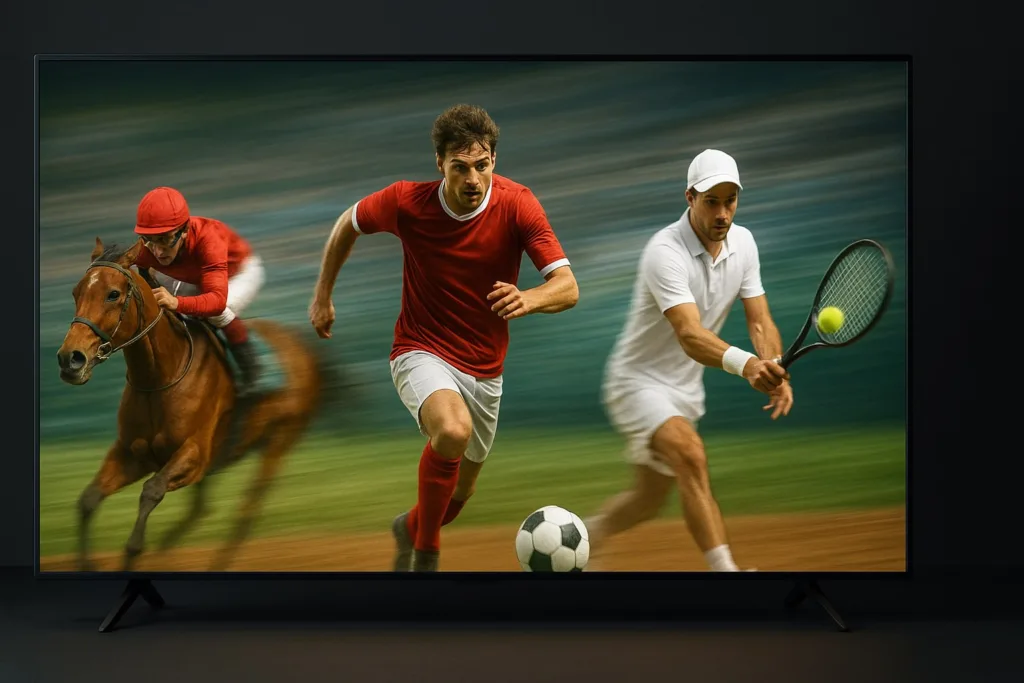
Why I’ve Never Needed Fast Pictures
I’ve traded hundreds of thousands of markets on Betfair for years without ever relying on “fast pictures”, trackside feeds or any other latency gimmick.
My edge has always come from three things: good data, rigorous analysis and excellent execution. That’s not as flashy as drones or satellite dishes in the garden, but it’s durable, repeatable and—crucially—transferable across sports and market regimes.
The problem with chasing speed
Relying on a fast feed looks attractive until you examine it properly:
- It’s an arms race you won’t win. Others will have access too—and someone will always be faster.
- It disappears overnight. A rights change, a venue tweak, a new delay, a hardware failure… you wake up and your “edge” has gone.
- It teaches you nothing about markets. You become dependent on a speed, not understanding the true driver of betting odds.
- It scales poorly. Speed edges are local, fragile and expensive. Data-led edges scale across sports, seasons and stakes.
What I rely on instead: a Durable Edge Framework
My approach rests on three pillars:
- Good data – Clean, consistent, properly timestamped data: prices, volumes, time-to-event, liquidity profiles, sectional times, court conditions, market microstructure features, and so on.
- Good analysis – Hypothesis-driven research, data mining, modelling, sensitivity checks and forward-testing. I never stop at top-line numbers; I dig into why the market moved and what that means for future iterations.
- Excellent trading – Execution discipline, risk sizing, practice, journalling and post-trade review. The method doesn’t work unless the operator is consistent.
Tennis: trading the game within the game
I don’t need to see the winner land a forehand a second earlier than TV to have an edge. I build models around:
- Serve-hold dynamics (by player, surface, fatigue and score state).
- Pressure moments (0-30, 30-40, break points) and how markets pre-price those states.
- Momentum that actually matters—the stuff that persists across service games, not the noise of one highlight.
- Regime shifts (new balls, medical time-outs, weather changes) that markets systematically misprice.
Most of my decisions are in position before the point starts because the analysis anticipates what the market tends to do next.
Football: markets move before the goals do
Goals are obvious. What isn’t obvious is how the market prepares for them:
- State space modelling: time decay vs expected-goal flow, scoreboard pressure and substitution windows.
- Set-piece cycles: certain teams generate price pressure after extended territorial phases or multiple corners.
- Game script drift: how a 0-0 with skewed shot quality trades differently to a sterile 0-0.
You don’t need a faster broadcast to exploit under- or over-reactions around half-time, tactical subs or a red card’s second-order effects. You need to know how those events usually reprice the match odds and when the market overdoes it.
Horse racing: structure and psychology beats speed
Pre-off racing is where a lot of people first learn that order flow matters:
- Book compression as time-to-post shrinks.
- Stable vs transient money and what it signals about likely drift or steam.
- Behavioural tells: patterns repeat endlessly in pre-off markets.
In-running, you can still build edges without fast pictures by understanding track biases, pace maps, sectionals and the predictable points where liquidity thins and prices overshoot. Understanding expected versus actual pace will tell you what will likely happen before it’s unfolded on the TV.
How to build an advantage that endures
- Log everything. Prices, volumes, times, your orders and fills. Treat your trading like a research lab.
- Form hypotheses first. “Markets overreact to early corners.” Great—define “overreact”, set thresholds, then test.
- Segment by regime. Surface in tennis; league/tactical style in football; race class/field size in horses.
- Forward-test ruthlessly. Avoid overfitting. Small, controlled stakes until the live data confirms.
- Execute like a professional. Pre-define entries/exits, scratch aggressively, size by edge and variance, journal the lot.
Why this has made me successful
I didn’t try to be the quickest; I worked to be the clearest. By digging underneath the superficial numbers and understanding how and why the market moves, I built processes that don’t rely on a fragile technological advantage. If a feed changes or a venue adds delay, my logic still stands. That is why this edge has lasted—and why it will continue to last.
Final thought
Speed fades. Understanding compounds. If you want a Betfair trading edge that survives the next rights deal, software update or hardware failure, build it on good data, good analysis and excellent trading. That advantage will be there tomorrow morning—and for a very long time after.
